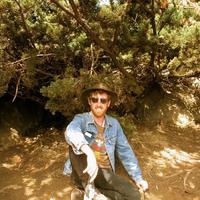Conor Hannan
The University of Sydney, History, Adjunct
- Cultural History, 1960s (U.S. history), 1960s, New Left, New York history, New York, and 26 moreSituationism, Situationist International, Radical politics, Social Practice, Art Theory and Politics, History of Political Activism, Cultural and Political Activism of the 1960s and 1970s, The 1970s and 1980s (U.S. history), 1960s and 1970s Art, Counter Culture, Counterculture, Countercultural Studies, Counterculture (Artist Run Inititiatives), Community Art, Community Arts, Harlem, Dada In Europe & New York (Man Ray & M. Duchamp), Allan Kaprow, Lucy Lippard, Art and Activism, Social Activism, Activist Art, Community Action Projects (Art), Student Protest, Social protests, and Protest Movementsedit
This paper examines the activist method and motivation of Up Against the Wall Motherfucker (UAW/MF), an art-political collective formed on the Lower East Side in the late 1960s. Exploring a series of actions, organizational alliances, and... more
This paper examines the activist method and motivation of Up Against the Wall Motherfucker (UAW/MF), an art-political collective formed on the Lower East Side in the late 1960s. Exploring a series of actions, organizational alliances, and community-orientated programs, it argues that the group’s project was informed by a critique of the social and political disengagement of postwar American art practice. In examining these themes within their neighborhood context, the paper makes an ancillary argument for addressing the local within histories of the radical American 1960s. While 1968 stands as a symbolic moment of political and social upheaval, the actions of UAW/MF – and its forbearer, Black Mask – illustrate the local dimensions of the so-called “protest era,” and highlight anxieties and concerns that promoted social revolt at the grassroots level.
Research Interests:
This study examines artists’ approaches to social change in New York City from 1966 to 1976. During this period, overlapping communities of artists and art professionals sought means of providing a social meaning and purpose for their... more
This study examines artists’ approaches to social change in New York City from 1966 to 1976. During this period, overlapping communities of artists and art professionals sought means of providing a social meaning and purpose for their practice – one that addressed the political ruptures of the 1960s and 1970s, and challenged what was perceived as a classed, elitist, and socially disengaged art establishment. In doing so, they produced politically motivated art and performance, while participating in active protest, initiating museum reform, and engaging in community arts and education projects. While these developments reflect the national context, the thesis argues that they need to be understood within their local setting. As artists responded to political and social concerns, they did so with reference to their own local conditions as both artists and residents of New York City. Tracing these impulses into the 1970s, the thesis also challenges scholarly periodizations that present 1969 as an endpoint for social movements initiated in the 1960s. Within this framework, the art and actions of New York art-protesters reflect unique and innovative approaches to activism and social change that both appropriated aspects of the avant-garde tradition, and anticipated future modes of political radicalism.
